31.01.23
Alasdair Day, R&B Distillers – Interview
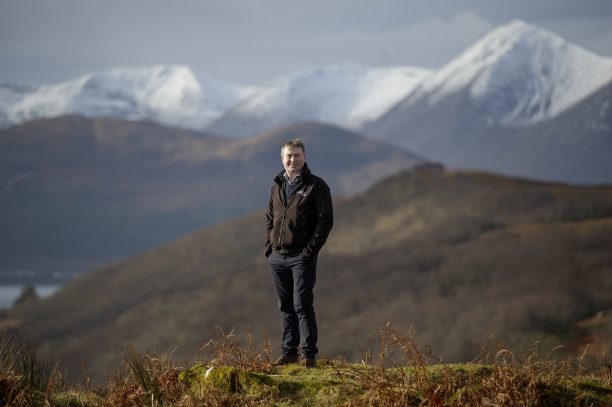 Alasdair (pic here by Peter Sandground) was on Raasay for this interview and turned the laptop camera round to show me the wonderful, slightly snowy view from the window. Last time I interviewed him was in 2015 for an American website as a consequence of tasting one of his expressions of The Tweeddale (Batch 3, it was) but he‘s been busy since then with other bottlings, setting up Raasay Distillery and preparing to construct a new distillery near Machrihanish in Campbeltown too.
Alasdair (pic here by Peter Sandground) was on Raasay for this interview and turned the laptop camera round to show me the wonderful, slightly snowy view from the window. Last time I interviewed him was in 2015 for an American website as a consequence of tasting one of his expressions of The Tweeddale (Batch 3, it was) but he‘s been busy since then with other bottlings, setting up Raasay Distillery and preparing to construct a new distillery near Machrihanish in Campbeltown too.
Back then his inspiration had come from the cellar and blending book of his great-grandfather who was a blender and merchant based in the Scottish Borders at Coldstream. His great grandfather‘s company was set up in 1820. The cellar book is from 1822, the sales ledger at the front and blend recipes from 1899 – 1916 at the back. I wondered if the book was still an inspiration for some of the company‘s output. „Yes, I still look at it regularly and often take it to tastings to illustrate the story of my connection to the whisky industry.“ That‘s just the kind of whisky archive material I love to look at.
I‘d followed The Tweeddale up to Batch 5 so was curious to know what‘s happening now. There was a Last Centennial bottling in 2016 from the 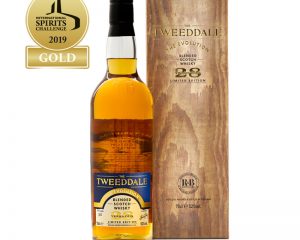 last blend recipe in the book and a Tweeddale 28 Year Old (the oldest to date) which is all gone. However, there will be a bottling of The Tweeddale 30 Year Old to come in the next couple of years as there are 4 casks being matured on. Wallets poised!
last blend recipe in the book and a Tweeddale 28 Year Old (the oldest to date) which is all gone. However, there will be a bottling of The Tweeddale 30 Year Old to come in the next couple of years as there are 4 casks being matured on. Wallets poised!
In 2015, you‘d started a project for a Borders Distillery, likely in Peebles, after posing the question to the public. What stage is that at now? Considering you‘re now focused on points west!
In 2012 I wrote a business plan for the Borders one and that‘s how I met Bill Dobbie, the main investor in R&B Distillers. When I pitched the idea to him he said he was thinking about Raasay and that‘s where the whole conversation about Raasay started. There‘s still an aspiration for a Borders distillery but Coldstream is more likely now as that‘s where it all started long ago. Asking people to say where we should build the distillery was more of a marketing idea to raise the profile of the company and the people – the history and legacy behind myself – plus what we were doing on Raasay.
So it wasn‘t anything to do with the Council refusing planning?
No, nothing like that. We looked at a few sites but as soon as we started the build on Raasay that‘s where all the focus had to be. As it‘s now doing well, that‘s where Bill‘s confidence came from to build a second one. [The family of Alasdair‘s business partner, Bill, is from the Campbeltown area.]
Raasay‘s been up and running for a few years and it‘s now well-known in whisky circles. Please update us on how it‘s doing.
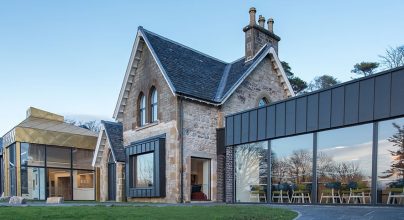 We‘re exporting to 27 markets and have a target to reach 40 in 2023. We also have a number of revenue streams – exports and UK sales, our own website sales which took off during lockdown (those are still good but have dropped back a little now post-pandemic), then our visitor centre and shop plus the accommodation. We‘re selling about 170,000 bottles of the whisky and about 30,000 of gin. We produce 180k – 200k litres of alcohol a year which would be a maximum of 600,000 bottles if all was bottled so we aim to sell 300,000 and keep back the equivalent of 300,000 for further maturation.
We‘re exporting to 27 markets and have a target to reach 40 in 2023. We also have a number of revenue streams – exports and UK sales, our own website sales which took off during lockdown (those are still good but have dropped back a little now post-pandemic), then our visitor centre and shop plus the accommodation. We‘re selling about 170,000 bottles of the whisky and about 30,000 of gin. We produce 180k – 200k litres of alcohol a year which would be a maximum of 600,000 bottles if all was bottled so we aim to sell 300,000 and keep back the equivalent of 300,000 for further maturation.
Remind us when Raasay spirit first came off the stills.
It was September 2017 and the oldest whisky we‘ve released is about 4 years old. We do 6 months of peated spirit and 6 months of unpeated and use 3 cask types, ex-rye, Chinkapin oak and ex-Bordeaux red wine. That gives us 6 different types to vat together for bottling.
Your maturation process is fascinating, a 6-part process. How did you come to that?
When we designed the distillery we had a blank sheet about how we intended to do things. Raasay is Hebridean so that‘s where the lightly peated element came from with black fruit notes plus we knew we wanted to bottle at 3 years old to start with and wanted to create complexity, depth and balance from the outset. The peated and unpeated spirits are matured separately.
What‘s your wood policy generally? Do you now have casks made and seasoned just for you?
Well, we use former rye casks rather than bourbon to add some spice and black pepper which bourbon wood doesn‘t have. It‘s North American oak – quercus alba. We looked to see what others were doing and, obviously, there‘s a boom in US craft spirits where rye is becoming cool. There‘s also chinkapin oak.
Yes, I wondered why chinkapin oak as it‘s not known to most people.
It‘s also from the US – it came out of the North American wine industry. We probably all remember over-oaked chardonnays from the New World! In the US they liked using the fresh quercus alba casks as it gave a lot of flavour early on yet they wanted fresh casks so needed something more mellow so that‘s where the quercus muehlenbergii came from. No one looked at old species – it was just American oak that became simply timber that was air-dried and coopered into casks. It‘s ideal for us and casks that are made for us (the chinkapin is all bespoke), we specify they need to air dry and season for 36 months then be given a high toast and high char so they‘re very, very active casks. There‘s a lot of oak at first but it brings in a dark fruit element rather than vanilla or butterscotch. The high char helps remove any impurities early on so that treatment is pretty important.
Why include accommodation at the distillery? Was the island tourist infrastructure too limited?
There‘s Raasay House which has 28 rooms and there were a few B&Bs and places for weekly lets. The house at the distillery, Borrodale House, had been a hotel but was disused. It had been empty for at least two years so the site really came with accommodation. We thought it might be nice to have a members‘ club as we now have a single malt but quickly realised that people really want to come and stay and have the full, immersive experience of Raasay and the distillery. They also want to eat so we now have an evening meal offering too. Raasay‘s still quieter than Skye! We‘ve won tourism destination of the year twice. [The most recent win was just late last year.] Also, it‘s a great place to take trade people as we‘ve hosted people from accounts we weren‘t winning but once they arrived, they really got what we were talking about.
You‘ve put in a planning application to build a distillery at Machrihanish near Campbeltown. What stage is that at now. Size-wise you‘re saying 400,000 litres of alcohol which is still quite small amongst distilleries. Spirit Character? Visitor facilities?
We expect to hear in June if the planning application is successful. We‘re keen to ensure it‘s a real Campbeltown single malt so predominantly plain malt and a bit of peated then matured separately again. The elements that would make a Campbeltown malt are a cloudy wort and it‘ll be longer or mixed fermentation times of 3 – 5 days. The longer fermentations help with that oilier character. Smaller mashbill sizes – a 2.5 tonne mash that will give us 12,500 litres of wash but 2 x 6,250 litre wash stills rather than one larger one. I think it‘s important to keep the stills small because that will help with the character we‘re looking for.
I note you chose a Danish architect firm for this one. What attracted you to them? 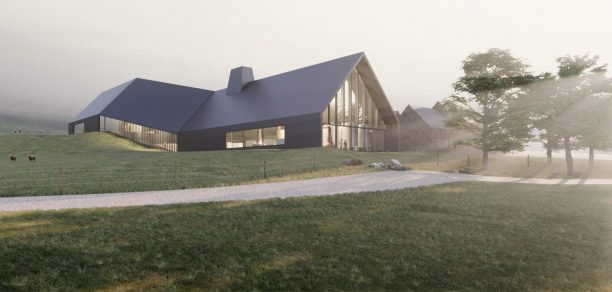
Their previous work. They designed Stauning Distillery in Denmark. We went to visit and it‘s very impressive. It‘s such a simplistic and clean Scandinavian design, very functional and striking. They were one of 3 firms asked to bid for the design work.
You indicate that Machrihanish will be field to bottle. Is that your own land for barley or all from local farmers?
Both. Last year we grew 20 tonnes at the Dhurrie farm site at Machrihanish and it was used on Raasay. We could get 30 – 60 tonnes from the farm allowing for rotation. The site had been a dairy farm for at least 40 years which we‘re slowly converting to arable, not organic but minimum input and soil improvement from the way we farm. As you can imagine the organic matter is quite high! Our neighbours there, the Grahams, in the last two years have grown 90 tonnes for us, malted and distilled on Raasay. The idea would be to work with as many local farmers as possible. From Day 1 we‘d like 300 tonnes of local Campbeltown barley, a third of what‘s needed. Over time we could sensibly work up to the 1,000 tonnes required.
Are you using any of the existing farm buildings for anything?
The plan is to retain the farmhouse and stone outbuildings which are actually quite attractive. Not the cowsheds or dairy parlour though. We‘re looking to see if we can reuse the steel and concrete of the other structures anywhere. The distillery, visitor centre and warehousing will be new build.
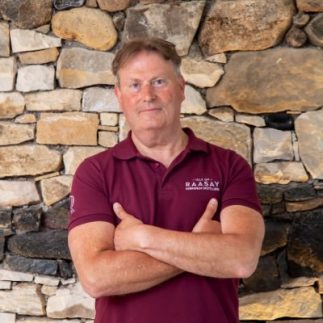 I‘d like to know more about you. Where are you from, where did you grow up and what was it like there?
I‘d like to know more about you. Where are you from, where did you grow up and what was it like there?
Bishopbriggs and then Bearsden [two suburban areas just outside Glasgow] so definitely a west coast person. So not Coldstream, then. No but the family had four houses in Coldstream so I spent pretty much every school holiday there and I knew about the licensed grocer‘s shop.
Remind us how you came across the cellar book again.
Dad had it. It wasn‘t put away and forgotten. When I got to drinking age and we were having a dram we knew it was there and looked at it at a few times a year. [In our previous interview, Alasdair told how he kept saying to his father that he must do something with it – and finally did.] I had no other whisky background. I have a degree in botany from Glasgow University which may account for my fascination with barley and oak!
You worked in the food industry – cheese and mushrooms, I believe. In what capacity and what‘s been your career path?
Initially production – as a mushroom grower and then on technical aspects like growing, packing, supermarket requirements. Then I moved into dairy and cheese, working for McLelland‘s [a well-known cheese brand in Scotland] and they worked with Scottish Milk products who had the creamery in Campbeltown so went there often to see the Mull of Kintyre Cheddar production. The company was bought by Lactalis, one of the biggest cheese companies in the world which took me into French and Italian cheese. Actually there are some interesting connections between cheese and whisky. Obviously cheese is fermented and matured. With our longer fermentation we get lactobacillus development and not all can survive the mashing temperature. One that can is lactobacillus helveticus, one we used in seriously strong cheddar to promote flavour and speed up the maturation process.
I was still working there and running The Tweedale in evenings and at weekends when an order came in from LCBO in Canada and I thought it would be fine still working evenings but you realise quickly how much is involved and it could nearly have gone wrong. I had to decide if the whisky was a fascinating hobby or my long-term future.
And here we are! What do you like most and least about your current work?
Most, the opportunity to design a distillery once – the liquid, the process, the wood quality from scratch is amazing and getting to do it a second time is quite something.
Least, that‘s difficult. Sometimes it‘s getting caught up in the day to day stuff just like any job. Though I am fortunate in being able to see this develop, both the business and the whisky.
How did you take to speaking in public and being an ambassador for your brand or were you used to facing the public?
I‘d probably rather not listen to the sound of my own voice but the difference is I‘m so passionate about what I do it‘s easy to speak about. One thing I didn‘t like about lockdown was just talking to a screen and not getting the instant feedback from people.
What do like to do when not working, if you even have time? 
Very much like being with the family. We‘re all rugby fans and my youngest son and youngest daughter play. She‘s at Aberdeen University now and plays for…, well, in fact she‘s the social convener for Aberdeen University Women‘s Rugby Team so that probably tells you a lot! [At which point I share that both of my teenage nieces play rugby in Ireland where they live.] I used to coach 6 – 16 year olds but don‘t get time any more. Most of what I do is around various elements of work. Also we have both sets of parents, now in their 80‘s, still with us and keeping up with and having a lot of contact there is important.
Where are your favourite places to visit for a) work and b) leisure?
Being able to work in places like Bordeaux, Jerez, distilleries in North America and see Japan. It‘s hard to pick a favourite as they‘re all so different. Leisure – we have a timeshare in Perthshire we like to go to. We like to holiday in Scotland too. Anywhere we go is mainly to do with food and drink. Local cuisine wherever we are.
That‘s a reason that appeals to me too. Any ambitions as yet unfulfilled for work and leisure?
Well, getting the Borders distillery done is a big aspiration though it may take a while yet. It would be nice if everything came full circle. On leisure, I‘m visiting Australia soon for the first time as there‘s family out there and really looking forward to it.
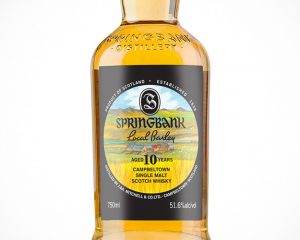 Lastly, back in 2015 you told me you like sweet and fortified wines outside of the whisky world. So, looking only at whisky, what ONE would be your desert island dram? Doesn‘t have to be one of your own.
Lastly, back in 2015 you told me you like sweet and fortified wines outside of the whisky world. So, looking only at whisky, what ONE would be your desert island dram? Doesn‘t have to be one of your own.
I think Springbank Local Barley [year wasn’t specified] because I like all that idea. I’ve been speaking with one of the local farmers who grows their barley and I like that they have their own floor maltings. Looking to the future, we recently purchased some vin santo casks for use on Raasay and we‘ve filled them only in the last few weeks. Of our own output, there‘s also The Tweedale 28 Y.O. or Last Centennial.
I think as the Springbank came out first that‘s what we‘ll go with…. for now. Definitely looks like that could change some years down the line.
So, it‘s thanks to Alasdair for his time. It looks like life is very happy both within R&B Distillers and without. This is going to be a super company to watch going forward and I‘m certainly eager to try more expressions from all parts of their operations in future.
I‘ll be back about middle of February with more but not sure what, quite yet. For now, happy dramming.
Slainte,
Caroline
Great knowing about Raasay Distillery. Great planning, vision & scale of operations with thrust on quality & character of the newmake spirit & subsequently the wood management with the innovative concept.
Wishing Raasay team the best.